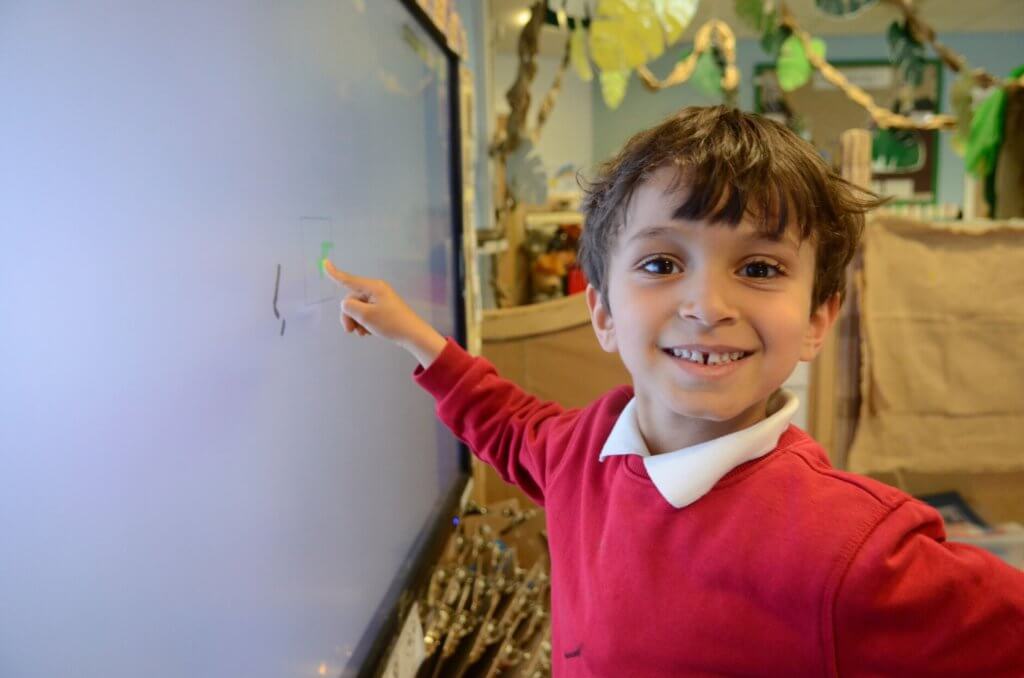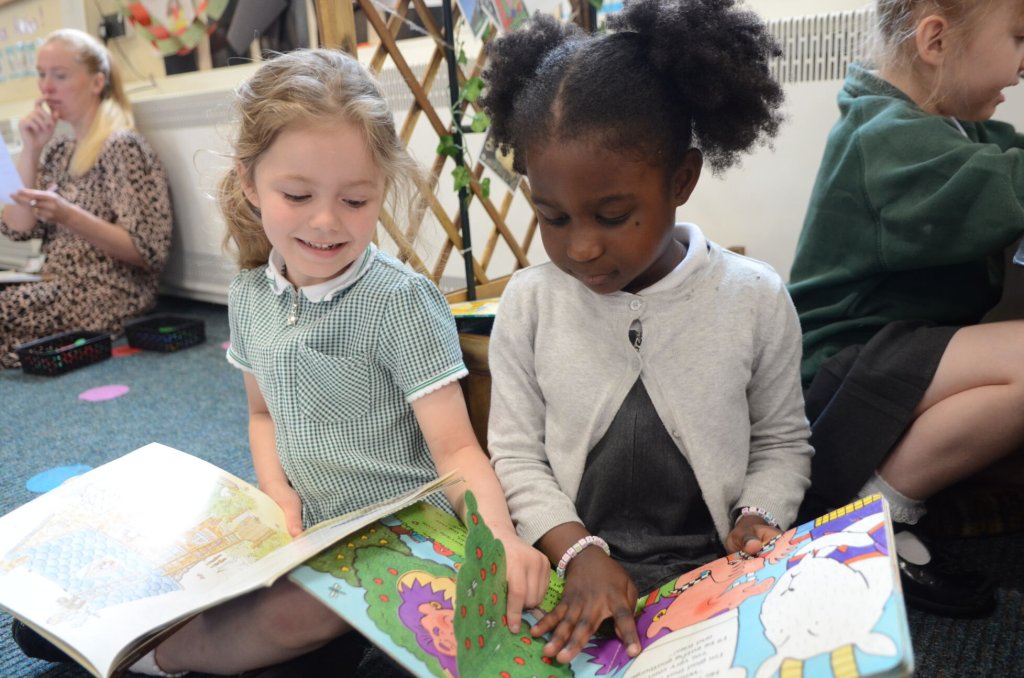In 2005, the charity Save the Children commissioned the National Literacy Trust to explore the link between reading and age, gender, and socio-economic background, to identify trends and potential barriers to reading amongst children and young people. Between 2005 and 2013, the National Literacy Trust surveyed thousands of children and analysed their responses.
Findings were used to inform the report, How reading can help children escape poverty (2014). The publication was produced by the Read On. Get On. campaign, which brings together teachers and other professionals, charities, business, publishers, and local communities to work towards the goal of all children reading well by the age of 11 by 2025.
The National Literacy Trust has continued to survey children and young people on their reading habits and publish their findings each year. On 4 September 2023, the National Literacy Trust published their latest report, Children and Young People’s Reading (2023). Now only two years away from the 2025 goal, researchers reveal that children and young people’s enjoyment of reading has reached a crisis point:
“In 2023, we recorded the lowest level of reading enjoyment since we started asking children and young people about this in 2005. A large part of the reason is that fewer of those who have traditionally enjoyed reading, such as girls and those aged 8 to 11, now say they enjoy it.”
– National Literacy Trust 2023.
Without immediate action, researchers warn that the downward spiral will continue.
It is up to us to change this. As educators, we understand the importance of reading for pleasure and the many benefits it can bring. Let’s work together to turn the page on reading and transform our pupils’ life chances.
Read ahead as we delve into the key findings from the report and consider the positive action we can take to reverse the trends in reading.
National Literacy Reading Report
The report is based on over seventy-one thousand responses from children and young people aged 5 – 18. It is broken down into three areas and includes findings on reading enjoyment, frequency and attitudes and explores responses by age, gender, socio-economic background, and geographical region. Through this blog, we will look closely at the findings from each area, whilst considering how this impacts us as educators and the responses we can take.
Reading enjoyment
Findings from the National Literacy Trust show that just 2 in 5 (43.4%) children and young people aged 8 – 18 say they enjoy reading in their free time. This is the lowest level since the survey was introduced in 2005.
Analysis shows that the level of reading enjoyment was lower among children who receive free school meals (FSMs) than their peers, (39.5% vs. 43.8%). Furthermore, fewer boys than girls said they enjoyed reading (40.5% vs. 45.3%). Notably, the gender gap in reading enjoyment has halved for those aged 8 – 18 between 2005 and 2023 (decreasing from a 10.7 to a 4.8% difference in favour of girls), but this decline is largely because of a greater drop in reading enjoyment in girls than in boys.
It has been suggested that initiatives launched by schools and libraries to engage boys in reading may have had an adverse effect on girls over the years. As Faith Bowman, a National Literacy Research team volunteer, points out, this attempt at “appealing to the masses” may not have been appealing to the masses at all. She says, ‘can we truly be shocked that the gender gap in reading enjoyment halving is largely because our young girls have suffered a huge decline in their reading enjoyment? Yes, the ‘gap’ closed, but at a huge expense.’
Despite all the best intentions, reading improvement should not be at the expense of any child regardless of gender, background or need. We know that reading for pleasure makes more difference to children’s life chances than their socio-economic background or their parents’ level of education (Sullivan and Brown, 2013). Studies show that reading also has a positive impact on mental health, self-esteem and empathy (Billington, 2015). Working in education, it is our responsibility to ensure every child can enjoy the opportunities that reading has to offer.
At One Education, we are proud advocates of reading for pleasure. It is the golden thread that weaves throughout our Literacy Services, from our Reading Gems and our PICC a text approach, designed to inspire children’s love for reading and writing through high-quality, engaging texts, to the Reading Award, which helps to embed a culture of reading across the whole school. We want to ensure that every child experiences reading as something to be valued, shared and enjoyed, rather than something that is strictly required.
What does reading for pleasure look like in your setting? Consider the following questions:
- Are quality texts at the heart of everything you do?
- Is Reading for Pleasure a priority in your timetable?
- Do your children see themselves as readers?
- Are all staff at your setting seen as reading role models?
- Do your parents and carers see the importance of Reading for pleasure?
To assist you within your setting, our experts at One Education have developed an A-Z of Reading for Pleasure. Download your free copy.
Remember, in order for children to think of themselves as readers, they need the opportunity to embrace a wide range of texts, genres and styles. Think about how you can create a rich reading environment, where books are part of the furniture! Look around your setting and consider the following:
- Have you completed your own reading survey in school?
- What does reading in my classroom look like?
- How can I share that reading is a priority with children and parents?
- What is the best way to organise my books to appeal to all my readers?
- Are my children encouraged to discuss books they have read and make recommendations to others?
The One Education Reading Award holds reading for pleasure at its heart. Participation in the award gives you access to expert support, criteria, and hundreds of resources dedicated to improving reading outcomes for all, including our pupil and parent surveys. These resources are designed to gain a true insight into Reading attitudes and habits in your setting, allowing you to build on strengths and address specific weaknesses.
Reading frequency
When we successfully promote reading for pleasure, reading frequency tends to naturally improve. However, it’s important to remember that children often have competing priorities and it can be challenging to find the time to read when they are outside of school. Therefore, we need to ensure that we provide as many reading opportunities as possible throughout the school day.
Findings from the National Literacy Trust underscore the need for urgent action in this area. Fewer than 3 in 10 (28.0%) children and young people aged 8 – 18 say that they read on a daily basis. This represents a 26% decrease since the survey began in 2005. Daily reading levels were lower amongst children on FSM than their peers (24.1% vs. 28.9%). Meanwhile, boys were less likely to read daily than girls (24.9% vs. 30.4%).
What can you do to improve reading frequency for your pupils? Consider the following:
- Do your children see that you are a reader, reading at any opportunity?
- Is reading within my setting given priority and protected on the timetable?
- Is reading embedded within all areas of the curriculum, not just in English?
- Are there opportunities for children to read built into every lesson?
- How do you help parents to understand the importance of Reading for Pleasure at home?
Setting up book clubs and book-based competitions can help to improve reading frequency. Reading workshops and parental questionnaires also ensure that parents/carers understand the importance of reading and can continue to support their child at home.
For further inspiration, take a look at our A-Z of Reading for pleasure ideas.
Reading environment
The building of a successful reading environment does not rely on any one, single component, it is a collaboration of many. Think about how you can spark children’s interest and curiosity in reading by arranging books around the classroom in an attractive, accessible way. Consider how you can help children to concentrate on reading by creating a calm and relaxing environment. Furthermore, think about how you can dedicate time to reading as a cherished part of the school day. Together, all of these aspects will help you create a strong reading culture in school.
The importance of a supportive environment, and how this shapes the reading experience, cannot be underestimated – especially in the light of the pandemic. During lockdown, children had more spare time and often this was spent reading together with their families. Books provided familiarity in a world that was very unfamiliar at the time. As a result, children read more.
However, as schools reopened, children went back to their busy timetables. Many practitioners felt the pressure to spend time on catch-up learning and reading for pleasure became a lower priority. Outside of school, children felt they had less time to read. Similarly, parents went back to work. Since then, attitudes towards reading and reading habits have declined.
Nevertheless, reading environments continue to have a huge impact on children’s reading. The latest report shows that children who have access to a supportive reading environment are nearly three times more likely to enjoy reading compared to those who feel their environment is less supportive (63.9% vs. 25.4%).
To ensure your environment can effectively support children’s reading, consider the following:
- Do you share reports/findings such as these with all at your school, including parents?
- Do your parents/carers understand that they continue to have a significant role in their child’s education, just as they did during the pandemic?
- Are your parents/carers questioned on the reading habits of their child at home?
- Are findings from questionnaires acted upon?
- How much time do you devote to taking a break, eliminating distractions and immersing yourself in a book?
One Education Can Help
The latest report on Children and Young People’s Reading undoubtedly paints a sad picture. This can feel defeating, especially when we know how hard many educators work to instil a love of reading in their pupils.
But it is never too late to turn things around.
Whatever challenges you face in your setting, One Education can help you get your reading culture off the ground. The One Education Reading Award can equip you with ready-to-use materials and strategies to put reading at the heart of everything you do. Learn all about the transformations that can take place in this testimonial.
Together, let’s work towards a future where every child is a reader.
For more information on how we can help you to build a reading rich environment at your school, please contact me at simone.nixon@oneeducation.co.uk.
Please complete the form below and we will get in contact as soon as we can to help you with your query.












